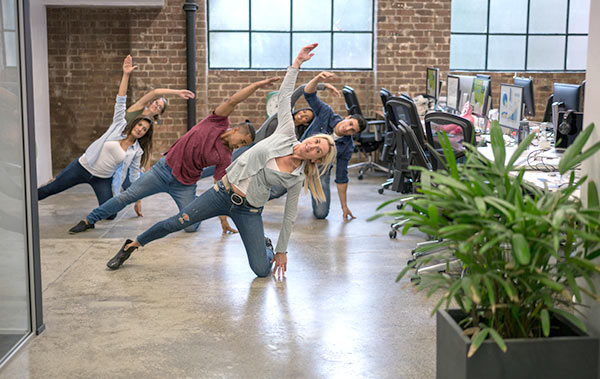Chances are you’ve heard it before:
To stay in shape, you need to eat less and move more. Eating less may be difficult. But, moving more may seem nearly impossible given the demands of family, school and work—not to mention the commute between all three.

How can anyone find time to squeeze in the current federal recommendation of 150 minutes of aerobic exercise per week? To meet that goal, you’d have to average 30 minutes of moderate-intensity aerobic activity at least five days per week.

As a scientist who specializes in physical activity and minority health, Robert L. Newton, Jr., Ph.D., admits it isn’t easy.
That’s why Newton and his colleagues at LSU’s world-renowned Pennington Biomedical Research Center in Baton Rouge are studying ways to use diet and exercise to improve health and longevity as well as better treat and prevent diabetes, dementia and other chronic diseases that shorten the lives of so many people.
Newton says the first step to getting fit—and staying in shape—is to understand this simple equation:
Any movement is better than no movement.
Newton suggests utilizing work hours to maximize time spent moving. It’s important to identify the times of the workday you’re seated the longest and try to add in some movement.
Ideally, the goal is moderate-to-vigorous activity. Newton says you’ve reached that level when you’re out of breath—with enough air to talk but not enough to sing. However, even light intensity physical activity has benefits.
“If you can get up from a sitting position at least once every 30 minutes to an hour, you’ve gotten a good start. That doesn’t mean you have to do sit-ups or push-ups in your cubicle, though,” Newton says with a laugh. “There are alternatives.”
For example: Instead of picking up the phone or sending an inter-office e-mail, Newton suggests walking to a co-worker’s desk or office to have a conversation. Other options include taking a quick stroll around the office or walking to get some coffee or water.
“It doesn’t have to be vigorous activity,” Newton says. “If you make moving a habit, those benefits will eventually add up. Over the short term, taking breaks reduces your glucose and insulin levels compared to standing. Over an extended period, we could see cardiovascular and metabolic benefits.”
These benefits occur because the simple act of walking engages the largest muscle groups in our bodies—the legs—which increases the uptake of glucose among other benefits. Conversely, if you sit too long, your body drastically slows glucose uptake. So, workers who sit for long periods are at a much higher risk level for obesity, diabetes and other diseases.

“If you can take three 10-minute breaks throughout your day and get moderate-to-vigorous physical activity each time, you’ve reached the recommendation for 30 minutes of moderate to physical activity for your day,” Newton says.
According to Newton, lunch time offers a prime opportunity to get quality movement in.
“If you work downtown or in an area with restaurants, walk to lunch. If you take your lunch to work, try to carve out time before or after you eat to get your heart rate up,” Newton says.
An added benefit: More time moving means less time eating during lunch hour.
Even if you can’t take frequent breaks, there are ways to improve your fitness. Newton suggests looking into a standing desk, since the simple act of standing engages the muscles in our legs. If a standing desk is cost prohibitive, Newton says placing a box on top of your desk to elevate your computer monitor and keyboard is a cost effective alternative.
“Of course, I think it’s best to start out standing for short periods of time and build up to longer periods,” Newton said. “And even standing up to stretch throughout your day can keep you flexible and limber.”
While a good heart-pumping workout is the ultimate goal, Newton advocates exercising where you can.
“It doesn’t have to be all-or-nothing,” he says. “If you can’t make it to the gym, start small and work your way up.”